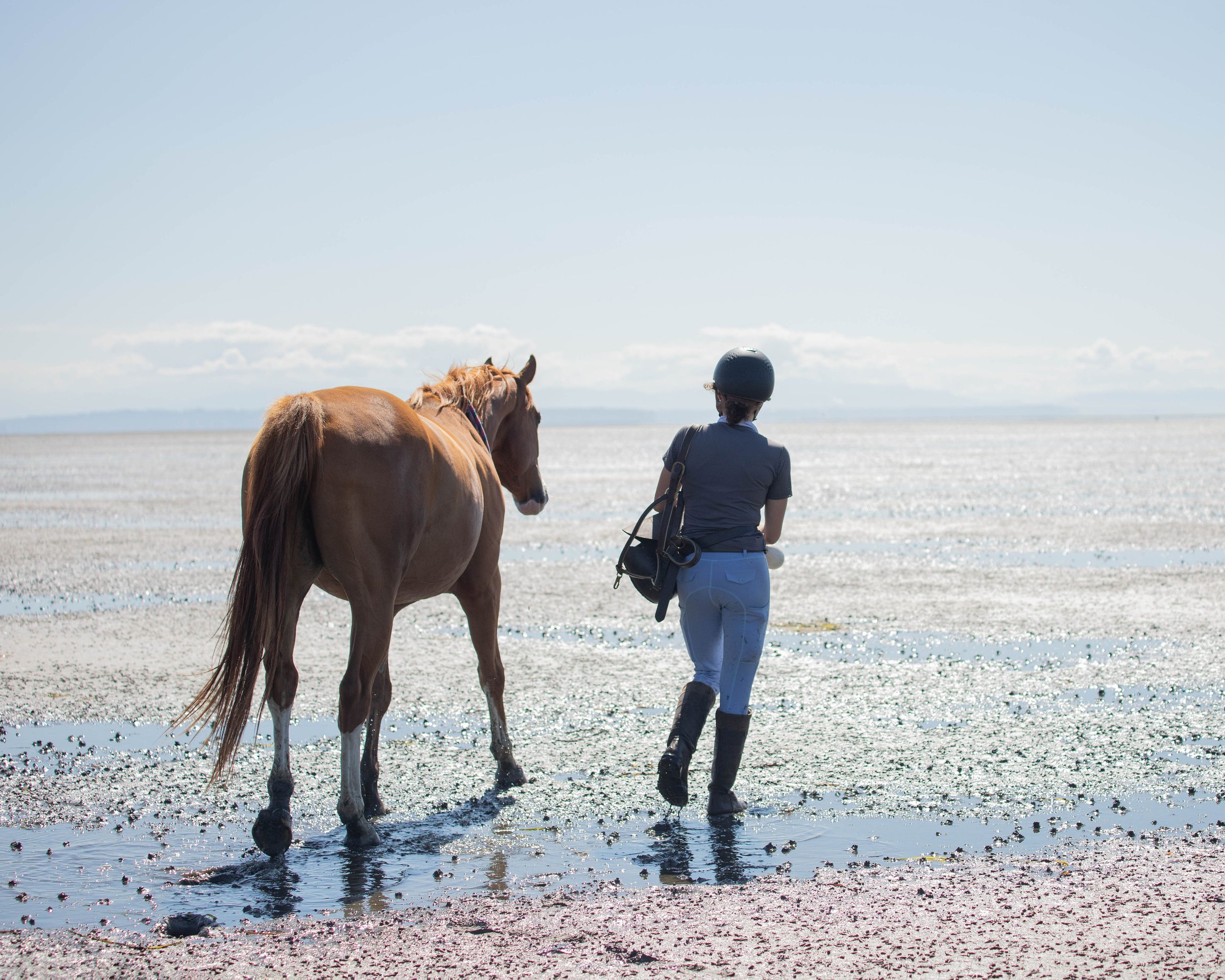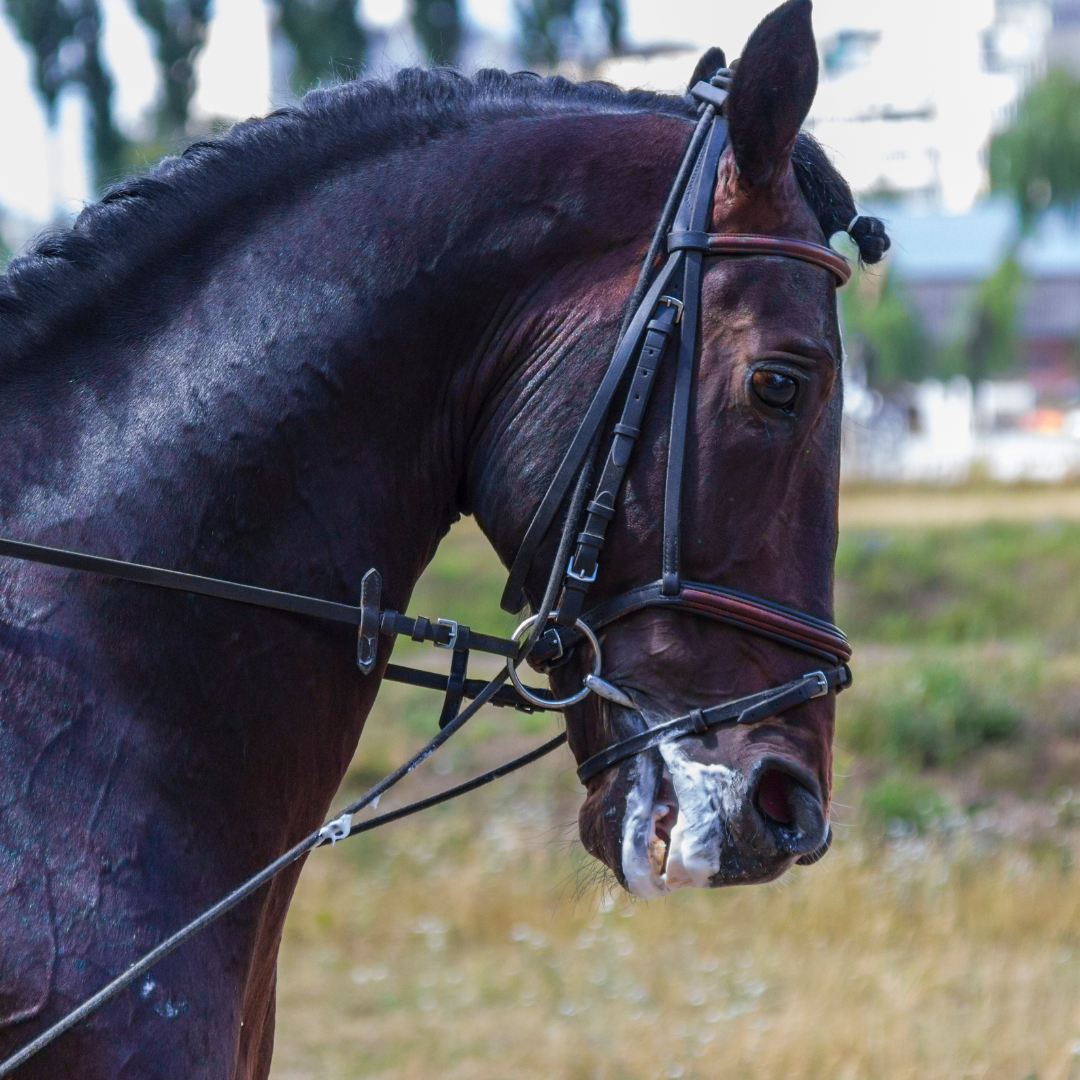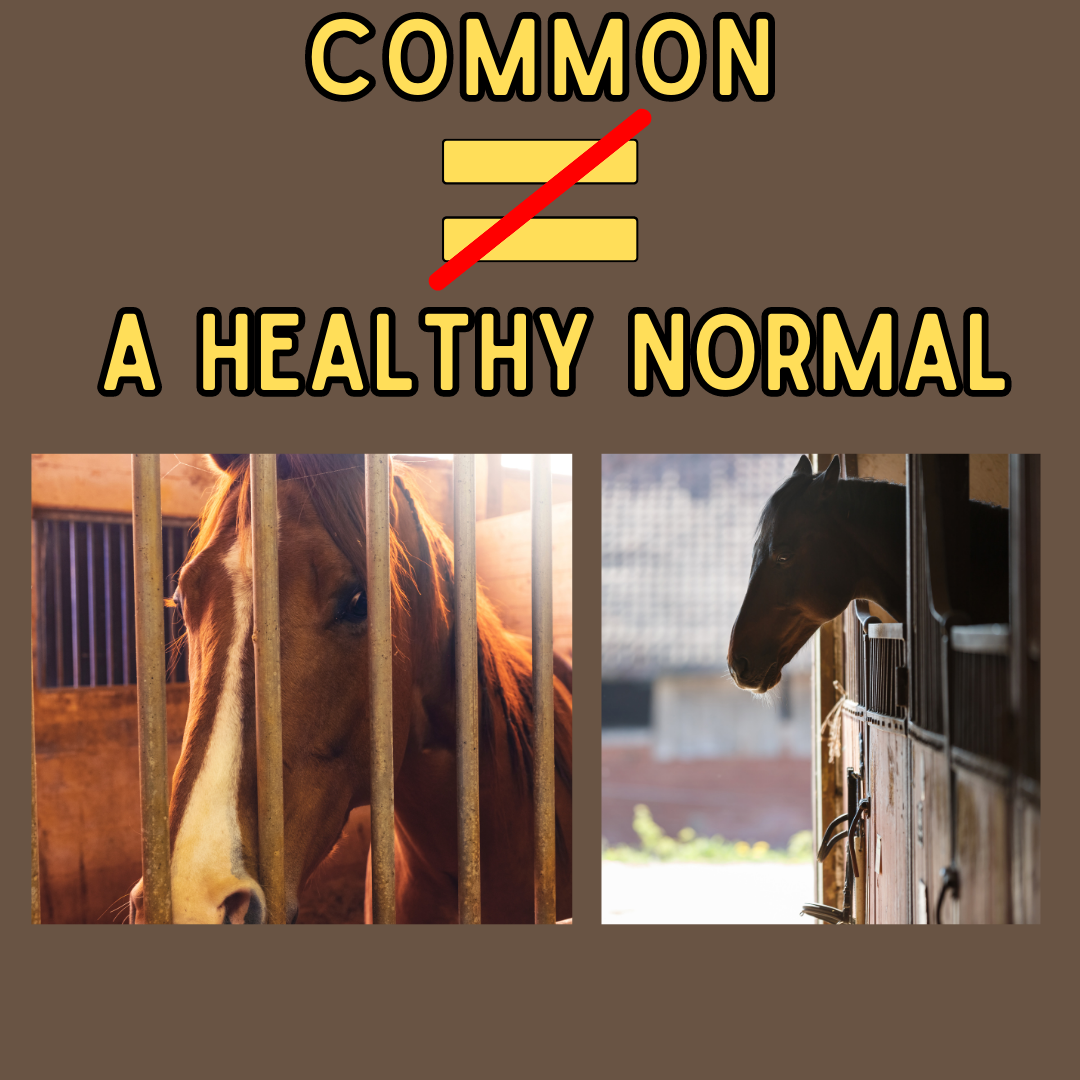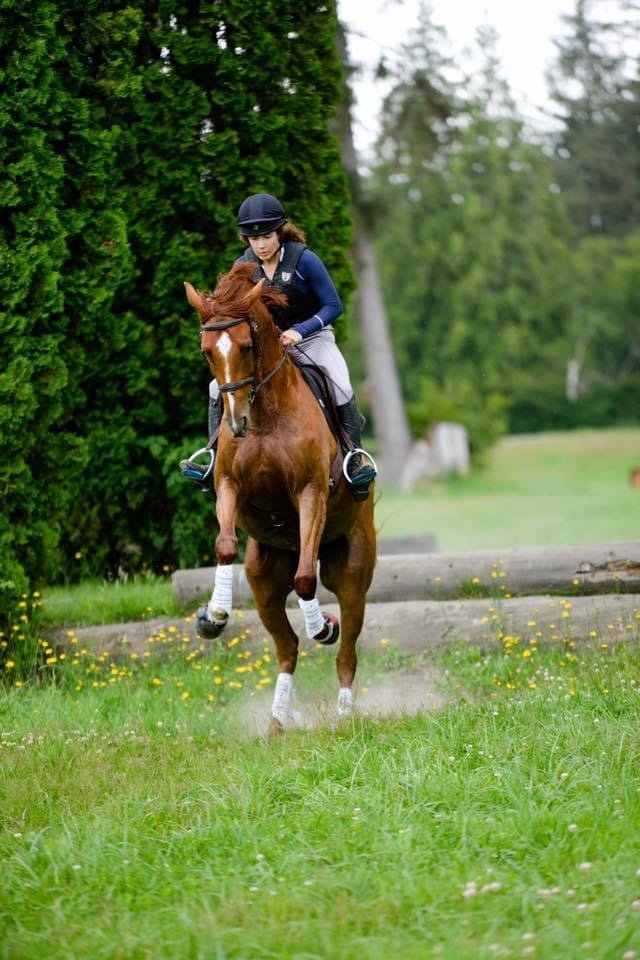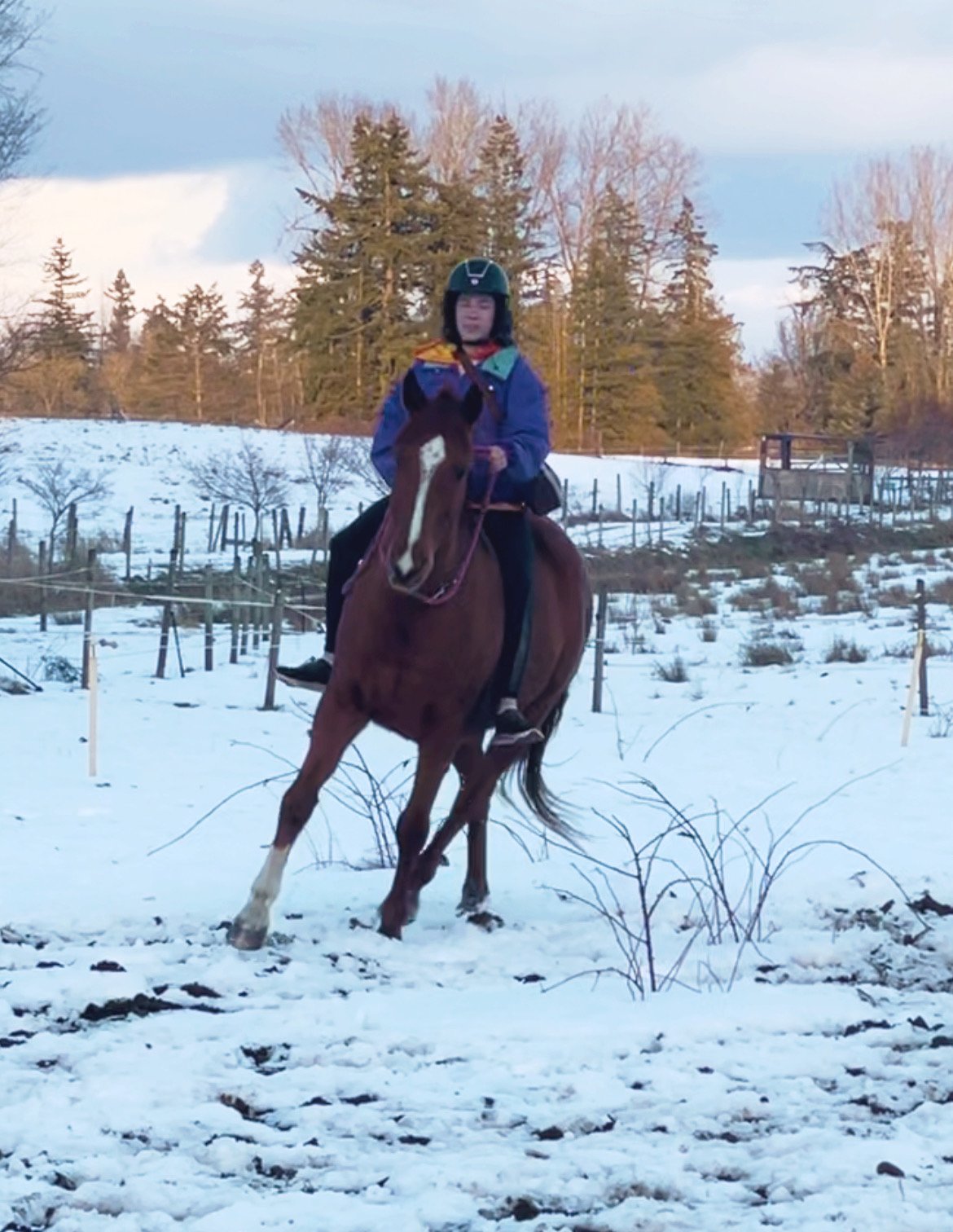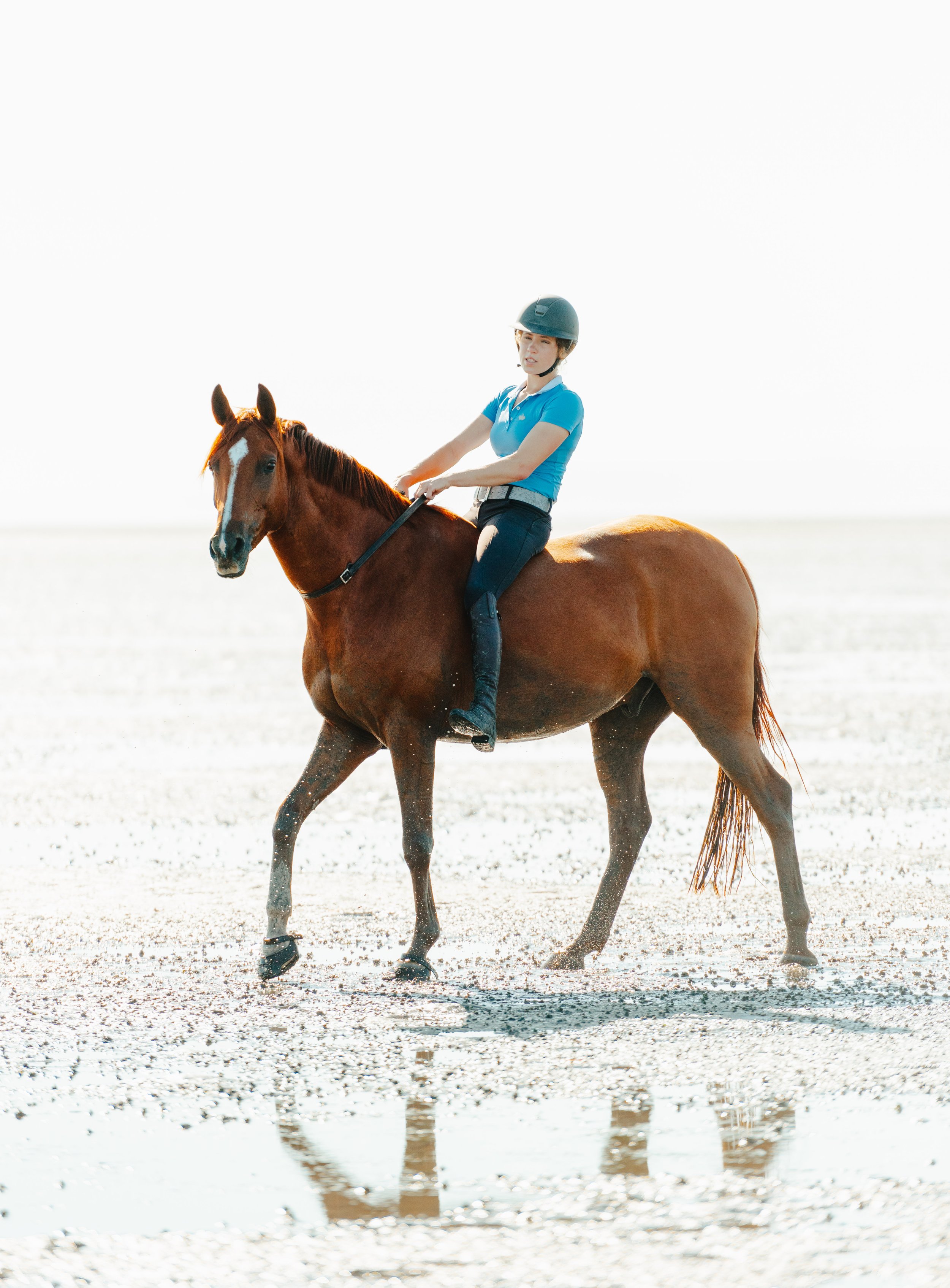How Growing Up in the Competitive Horse Industry Changed My Brain Chemistry
/I started riding at four years old. Before that, I was obsessed with horses, begging to ride as soon as I could articulate the words. My journey began on Arabian show horses, and it wasn’t long before the allure of competition pulled me in.
I entered the show ring at five, starting with lead line classes and moving on to walk/trot once I could navigate a horse on my own. From that point, I was hooked. Showing felt like the natural progression in my equestrian journey.
My goals became laser-focused on the show ring. It was all about achieving consistent placings, qualifying for regionals, and building myself up as a rider to be “the best.” Every lesson was centered around preparing for shows. Even within the same barn, competition was palpable amongst me and my peers. We all wanted to be the best and to earn praise and attention from the trainer who we idolized..
Despite my young age, I felt the weight of other parents’ insecurities. If I placed higher than their kids — despite their more expensive horses and pricier training — they’d voice their discontent directly to me. I was under ten, but already internalizing that my worth as a rider was directly tied to external validation.
I became critical of myself and of others. At shows, it was common to sit and scrutinize riders, commenting on their abilities or perceived lack thereof. Gossip was the norm. Friends became sources of drama, and the constant pressure to prove myself only fed my anxiety. I felt watched, judged, and scrutinized.
Coaches and adults added to the pressure. I became hyper-focused on appearances; how I looked, how my tack and clothing looked, how my horse looked. That need for perfection trickled into my everyday life, breeding insecurity. I became a people pleaser, molding myself into what I thought others wanted me to be.
In the pursuit of show ring success, my horse’s needs also took a backseat. It was normal to keep horses stalled most of the time, minimizing turnout to avoid potential injuries or blemishes. I never questioned the ethical implications, after all, that’s just how it was done.
My horse was notoriously spooky, a chronic bolter. I chalked it up to his personality, never considering that his behavior might be a byproduct of his environment and management.
As my fixation with winning grew, my patience thinned. A bad lesson or ride left me frustrated, and often that frustration was taken out on my horse. If he was heavy in the bridle or tried to bolt, I became harsher. I parroted the logic of trainers, telling myself it was his fault for being difficult and that he was meeting repercussions he could easily avoid by not being difficult.
The love I had for horses was fading, replaced by a desire to prove myself. My entire identity became about being a competitive rider. But when family financial troubles hit, I could no longer show as often or at the same level. My sense of self crumbled as a result.
I had lost interest in riding for fun. The barn felt empty without the constant push toward the next competition. It felt like there was no purpose, that I had nothing to work towards if I was not showing. Eventually, I moved my horse to a “backyard barn” where the horses had 24/7 group turnout. I watched as my spooky horse transformed into a calm, beginner-safe mount. The only thing that had changed was his environment.
That was the first moment I started to question everything. Had my entire perspective on horsemanship been skewed by the competitive world I grew up in?
In that more relaxed setting, I learned to enjoy being around horses again. Riding became fun rather than a means to an end. But even as I eased into a more grounded routine, the drive to compete lingered.
I shifted my focus to retraining off-the-track Thoroughbreds and entering the hunter/jumper world. This world was even more elite with high-class horses, exorbitant fees, expensive tack, and constant comparison. I felt perpetually inadequate next to riders who could afford to compete year-round.
It took a while of chasing the approval of people who didn’t even care about me to realize that the competitive horse world is just a microcosm of elite society, where wealth and privilege dominate. The few who make it from humble beginnings are held up as proof that “anyone can do it,” but they’re exceptions, not the rule.
For every rider who “makes it,” countless others burn out, exploited for free labor as working students or struggling under the financial strain of trying to chase competition to stay relevant in the eyes of the elite. And for what? To be part of a world that values results in the show ring over ethics and true horsemanship?
I started studying equine science in post-secondary, and everything I learned only solidified my building doubts. I saw how normalized practices in elite barns directly contradicted horse welfare research. I saw how high-level riders justified stress behaviors as personality quirks, ignoring signs of distress because that’s just how “top horses” are.
The more I questioned, the more defensive people became. Criticizing elite riders was taboo. The default response? “Let’s see you compete at their level. You know nothing, you can’t judge.” And that gaslighting culture made it nearly impossible to question harmful practices… unless you were willing to do so knowing you would be putting your neck on the line.
Essentially, to exist in elite horse sports and fit in and be “peaceful “you need to shut the fuck up and not question anything. You need to be subservient to people at the top and never speak out of line unless you are amongst the elites yourself. But, even then, if you do speak out of line, you are highly likely to get ousted.
So, this is why so few upper level riders are actively speaking out about horse welfare, despite the increasing pressure to do so by welfare experts, like Equine, scientists, behaviorists, veterinarians, ethologists, etc.
I now view a lot of the competitive Horse world in the same way that I reflect on a lot of the elite aspects of society as a whole.
It becomes increasingly difficult to maintain morals and ethics, while still chasing success at the pinnacle of the sport.
The more wealthy, privileged and elite a person is, the less closely aligned they seem to be with ethics as a whole.
Like in the case of the elites in general human Society, such as billionaires, it is more common to see these individuals be corrupted than not.
There is a certain level of status and wealth that can realistically only be achieved by stepping on toes.
And, honestly, I view a lot of the elite horse sport to be adjacent to this concept of billionaires.
You can’t really get to a certain point and be widely successful internationally with the current confines of how Horse sport functions, without sacrificing welfare to an extent.
The people who are doing the best are often the most involved in abuse scandals.
Numerous of the top dressage riders in the world have abuse scandals, or have been photographed rollkuring their horses or riding with such a tight rein that their horse has a blue tongue.
What would be the purpose of doing this if it was not achieving success?
If I’m going to look at this and be completely honest and pragmatic, I’m gonna just call it what it is.
Elite horse sports do not demand ethics in order to achieve success.
In fact, you are more likely to get this success by diluting your ethics then you are by maintaining them.
And so, many people, even if they start out with the utmost greatest intentions, end up being corrupted in order to attain their goal of being an elite level rider.
Outside the horse world, I have started exploring other sports such as kick boxing and rock climbing. The contrast is stark. The climbing community in particular has felt much more diverse and inclusive. There seems to be much less emphasis on conforming to a specific appearance and much more on individual progress and community building. It is also SO much more accessible and I think that the accessibility alone is dramatically linked to the diversity seen.
As a community, it cannot be as conformist and insular as the horse world is because it is far more accessible to people of all backgrounds, making it less of an echo chamber, enabling more free thinking and individuality.
In contrast, the horse show world is predominantly wealthy and white. Conformity is the price of acceptance. Even minor deviations, like wearing a slightly off-color jacket in the ring, can make you a target for criticism.
Ironically, this criticism rarely extends to actual horsemanship. Riders will defend harsh equipment or abusive training tactics but will ruthlessly critique someone for not having the “right” look.
It is often more of a faux-pas to deviate from traditional garb than it is to utilize training methods that have been shown to be harmful.
I now see elite horse sports through a different lens. At the top levels, maintaining ethics often takes a backseat to achieving success. Many riders genuinely don’t realize how much they’ve compromised, just as I didn’t.
One can have the best intentions while still causing harm.
Ultimately, it is how we respond to the knowledge that we have caused harm that really matters.
And, the fact of the matter is that many of these top level riders, and those that support them respond with immediate denial and a complete refusal to consider the possibility that they have caused harm.
They deny, they defend, and they insist that the horses at the top of the sport get the best of the best care.
But, what is the best of the best? Is it what humans define it as based off of what they have normalized, or is it what is based off of tangible evidence that shows what Horse is actually need to thrive?
Unfortunately, for many at the top of the sport, the science behind what horses need to thrive really does not matter.
They insist that people working in the science field don’t know what they’re talking about because they haven’t competed at the top of sport. They insist that Horse welfare and what makes them happy cannot be measured in “a lab “despite the fact that these studies are being conducted in the field on elite level Horses.
They also insist that no one who is not a participant in elite level sports could actually know how these horses feel or function, which entirely erases any credibility from top behavioural experts, because if they are not actively competing at the pinnacle of the sport, no one in that elite club wants to hear from them.
This makes it nearly impossible to enforce welfare protocols at the top of the sport, because the only people that the people at the top of the sport want to listen to are their peers.
For those of us who grew up in that world, stepping back and reflecting is painful. It’s hard to admit that we might have hurt the horses we claimed to love. But intent doesn’t erase impact.
So, what now? How do we reform a culture so steeped in elitism and conformity?
I don’t have all the answers, but I think it starts with being honest… with ourselves and with each other.
We need to share our experiences, question the status quo, and support each other in finding better ways forward. We need to amplify the voices of those who have been harmed, both human and horse. And we need to ask ourselves:
If elite-level horse sports are truly the best of the best, why do they rely so heavily on silencing dissent?
After all, if everything is ethical and above board, it should be easy to defend it through explanation and credible research, should it not?






